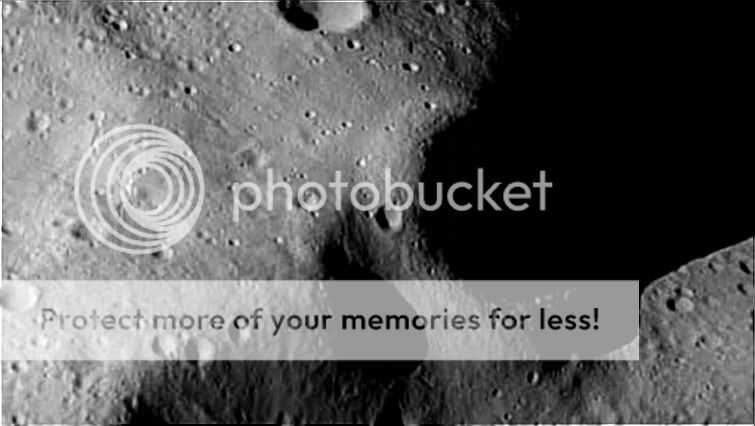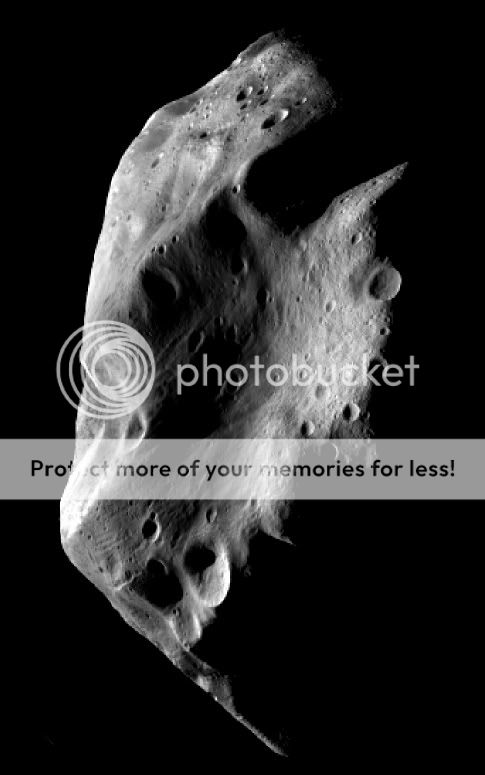3
3488
Guest
Decided to put all Main Belt Asteroid 21 Lutetia imagery to date from the ESA Rosetta Spacecraft in one place.
21 Lutetia has a diameter of approx 132 KM / 82 miles, & orbits the Sun in the main Asteroid Belt between the orbits of Mars & Jupiter.
21 Lutetia orbit's the sun in a mildly elliptical, but stable orbit, with a close point to the sun of 189.63 million miles or 2.04 times the Earth to Sun distance, with a far point of 263.20 million miles or 2.83 times the Earth to Sun distance once every 3 years & 292 days (a 21 Lutetia year).
The large asteroid rotates on it's side with a tilt of approx 85 degrees (Earth has a tilt of 23.5 degrees, hence our seasons), so 21 Lutetia has some severe seasons as around a solstice near enough one 'hemisphere ' of the asteroid is is contant sunlight, whilst the other is in total darkenss, with even amounts of sunlight around the equinoxes. This means that at a 'summer' Solstice the Sun passes almost overhead of a pole, with the equator running along the day / night boundary.
Calculations show that in high Summer, the maximum surface temperature may reach a dizzying high of Minus 7 Celsius / 19 F, we get colder than that here in Ashford, Kent, UK sometimes in Winter & Spring.
However on the shadowed night side, temperatures are likley to drop to around or even below Minus 230 Celsius / Minus 382 F, cold enough to freeze Methane, Oxygen & Nitrogen & liquefy Hydrogen.
Just to report, my take & a few snippets picked up, the images from closest approach are EVEN better than anticipated. The whole of 21 Lutetia at closest approach was seen to 60 metre resolution, due to the precise tracking of Rosetta. 95 metre resolution was anticipated, but 60 being achieved, is just astonishing.
Also 21 Lutetia appears to me (I have been working on a few images, see previous posts) to be a primitive Type C body, though without compositional data, cannot say for sure.
There is a large basin, over 60 KM wide on the 132 KM by 101 KM by 76 KM wide asteroid, there are grooves, very similar to those on the Mars moon Phobos & the few seen on asteroid 951 Gaspra, as seen by the Jupiter bound Galileo Spacecraft.
There are boulders, craters of all sizes, a landslide in at least one crater & the shape of 21 Lutetia is multifaceted (that was expected). There are virtually no changes in albedo.
Later today, Sunday 11th July 2010, there will be full colour images & maybe more B & W imagery. The image from 80,000 KM looking reddish was taken through a red filter & is not actual colour, although 21 Lutetia, may turn out reddish, we'll see.
To me, the approach to 21 Lutetia suggests to me that the large 132 KM wide asteroid rotates in a prograde direction, west to east like Earth & that 21 Lutetia may have been caught near an equinox, based on how the appearance of the shape of 21 Lutetia during approach seem to suggest an equinoxial approach. 21 Lutetia is thought to rotate at a tilt of 85 degrees, on it's side basically, once every 8 hours & 10 minutes.
There appear to be no moons orbiting 21 Lutetia unlike 243 Ida.
Some craters appear to have dark floors like asteroid 243 Ida as seen by the Jupiter bound Galileo Spacecraft.
Other data, concerning potential dust, outgassings & fields & particles will be released later.


Early 21 Lutetia approach images enlarged & sharpened by me.
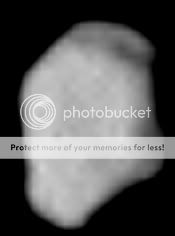
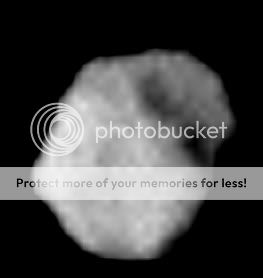
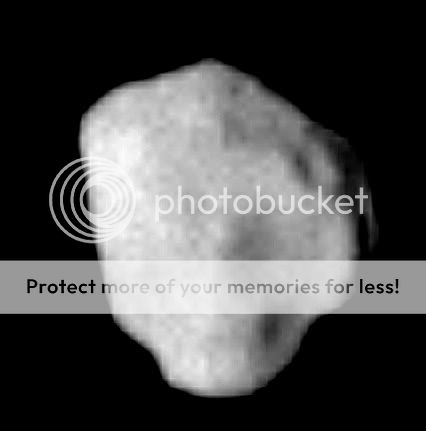
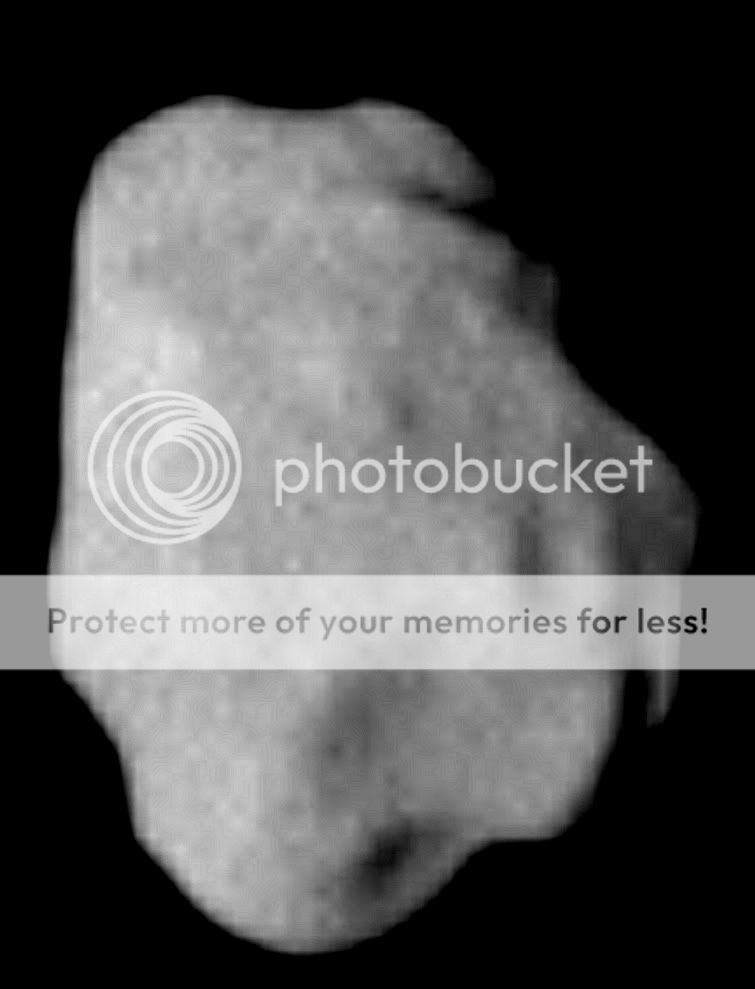
21 Lutetia with Saturn in background.

21 Lutetia limb.
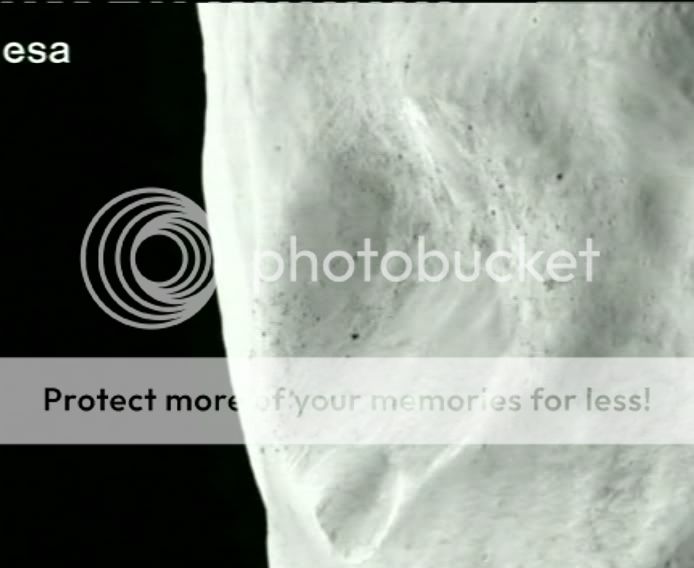
21 Lutetia. Highly grooved like Phobos.
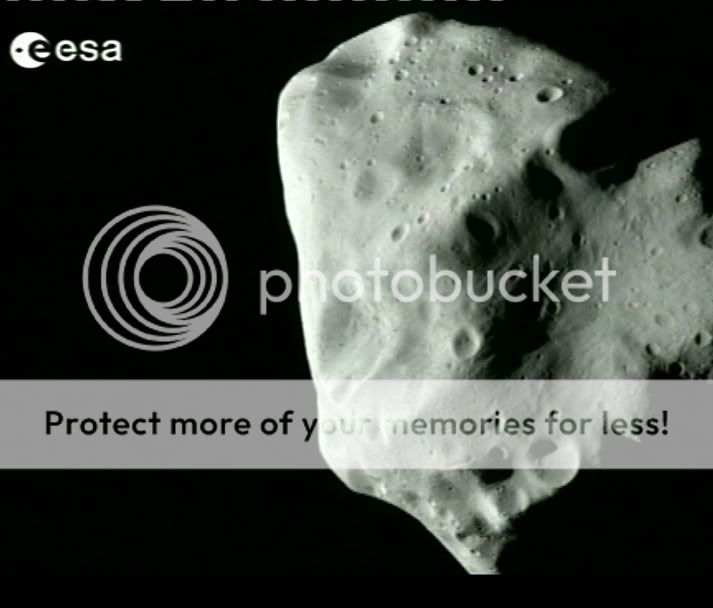
Two clickable thumbnails for full sized images. 21 Lutetia is highly grooved.


Part of the highly detailed limb enlarged sharpened crop of 21 Lutetia.
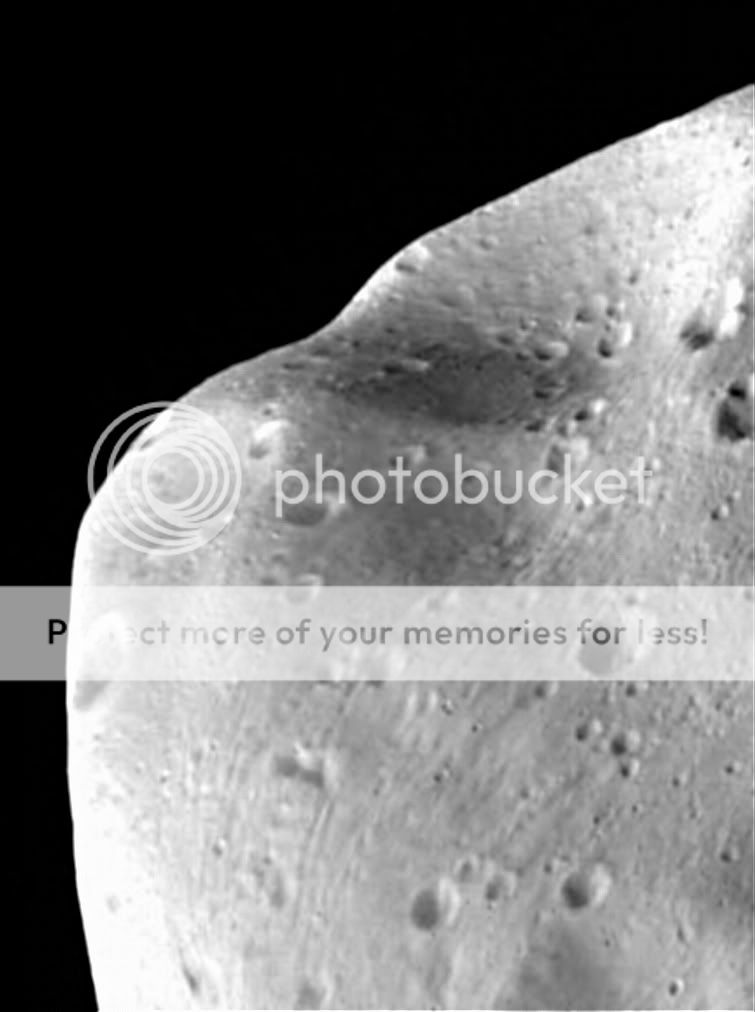
Full resolution 'crescent' 21 Lutetia, as Rosetta looks back.

Clickable thumbnail 4 views near closest approach of 21 Lutetia.

One of the final approach images of 21 Lutetia.
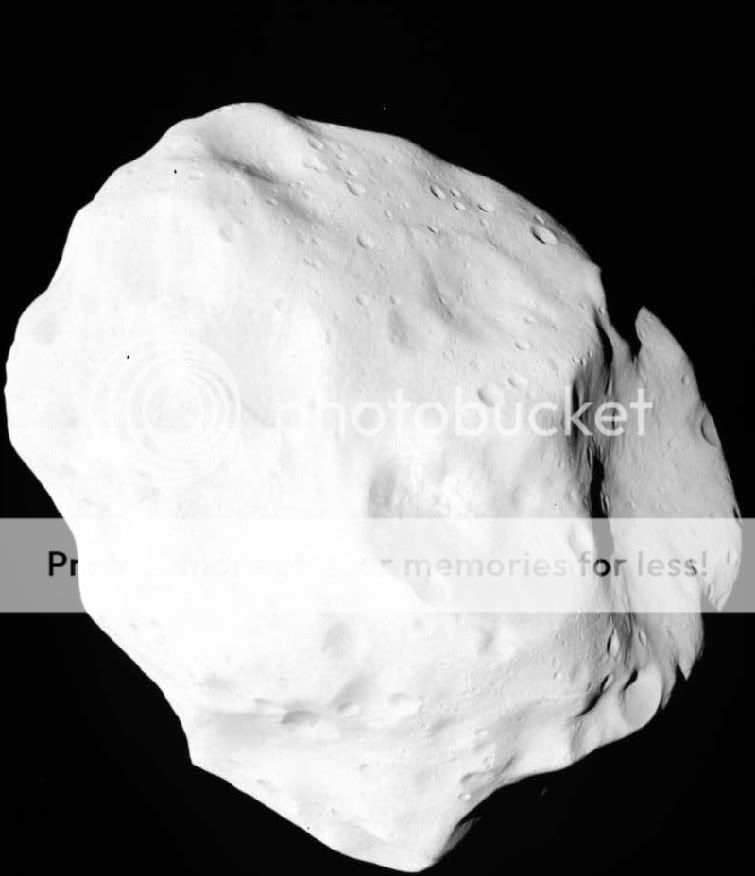
An enlarged sharpened crop of some grooves on 21 Lutetia. Boulders can also been seen. My guess is that this area is approx 20 KM wide.
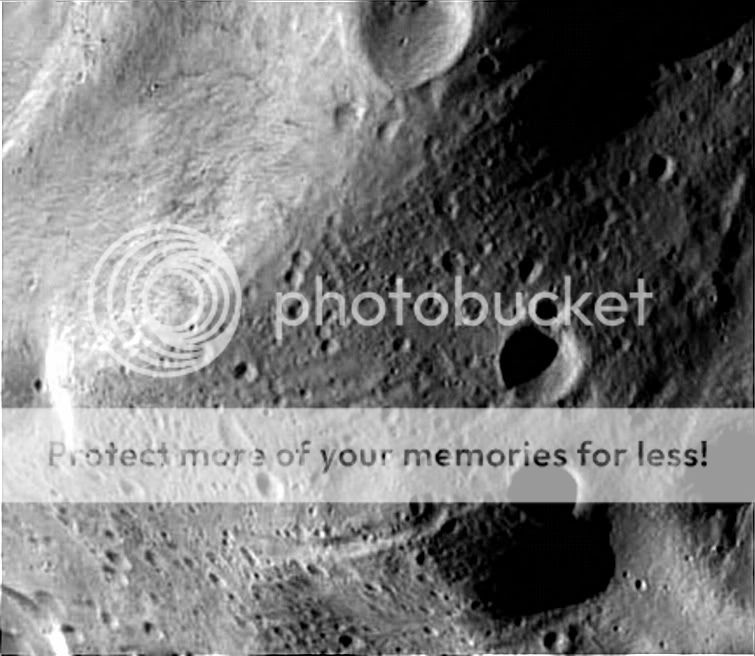
An enlarged sharpened crop of some grooved terrain including a few isolated ones at right angles on 21 Lutetia. My guess is that this area is approx 20 KM wide.
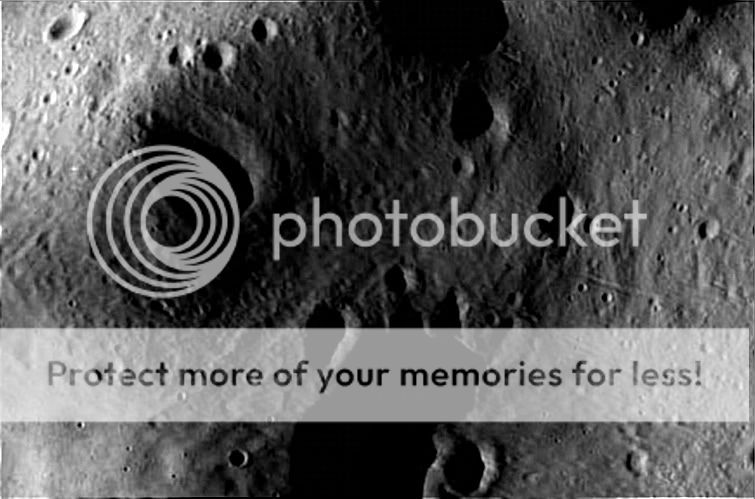
An enlarged, sharpened crop of the basin on 21 Lutetia, oblique view earlier during the approach.
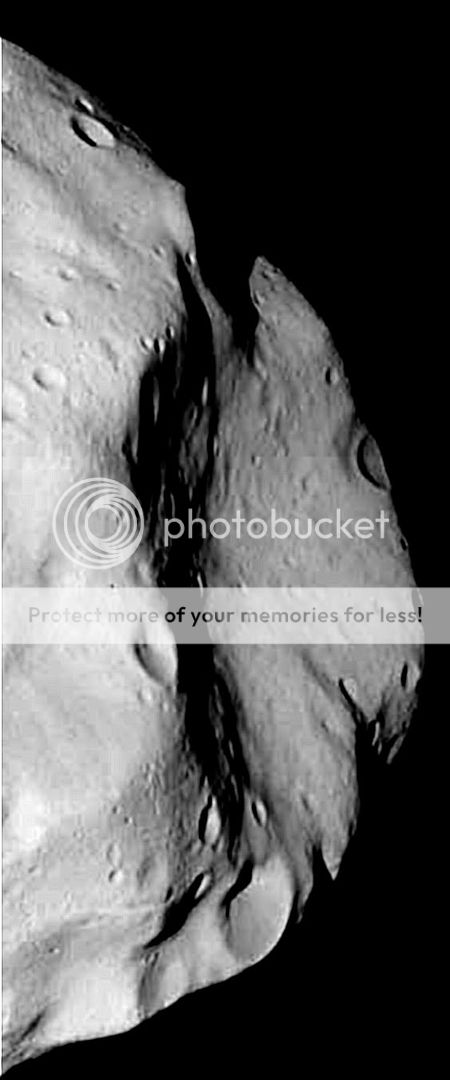
An enlarged, sharpened crop of the basin on 21 Lutetia, oblique view later & closer during the approach.
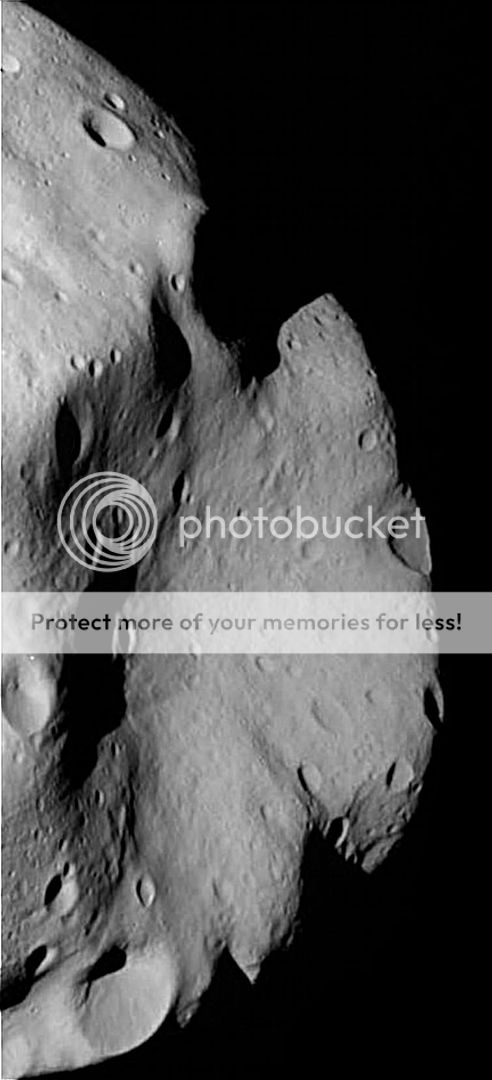
Enlarged, sharpened crop of the 'bottom' south polar region (???) of 21 Lutetia
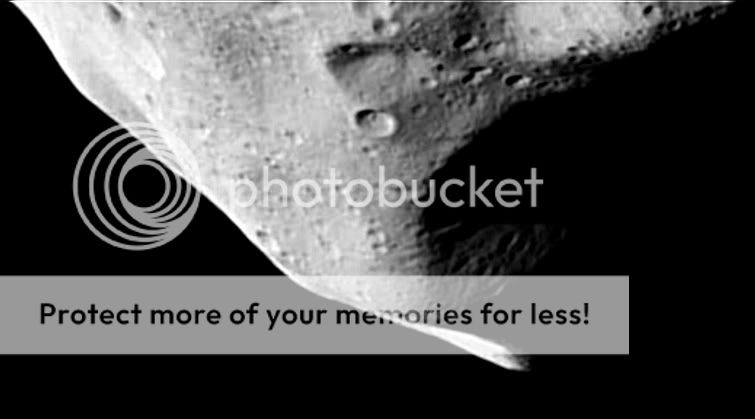
Enlarged sharpened crop of an area approx 20 KM wide on the terminator. If you look carefully at the craters, some appear to have slightly darker floors, much like some on asteroid 243 Ida.
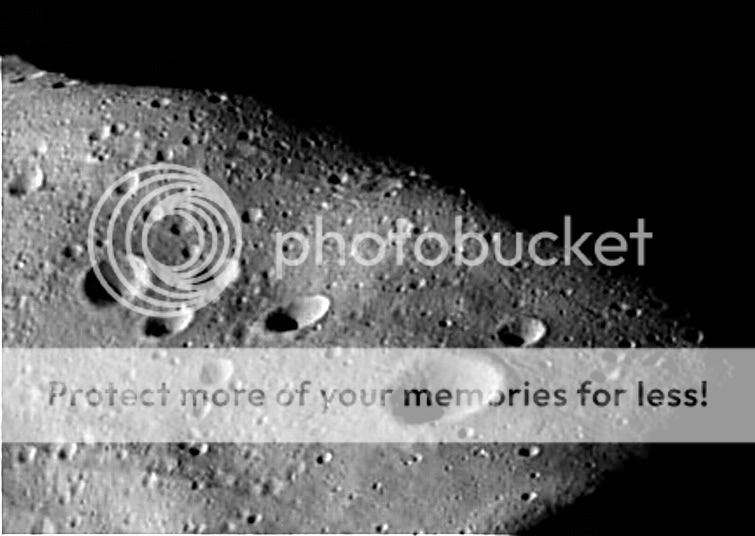
Enlarged, sharpened contrast enhanced crop of crater approx 20 KM wide with boulders & a possible landslide.
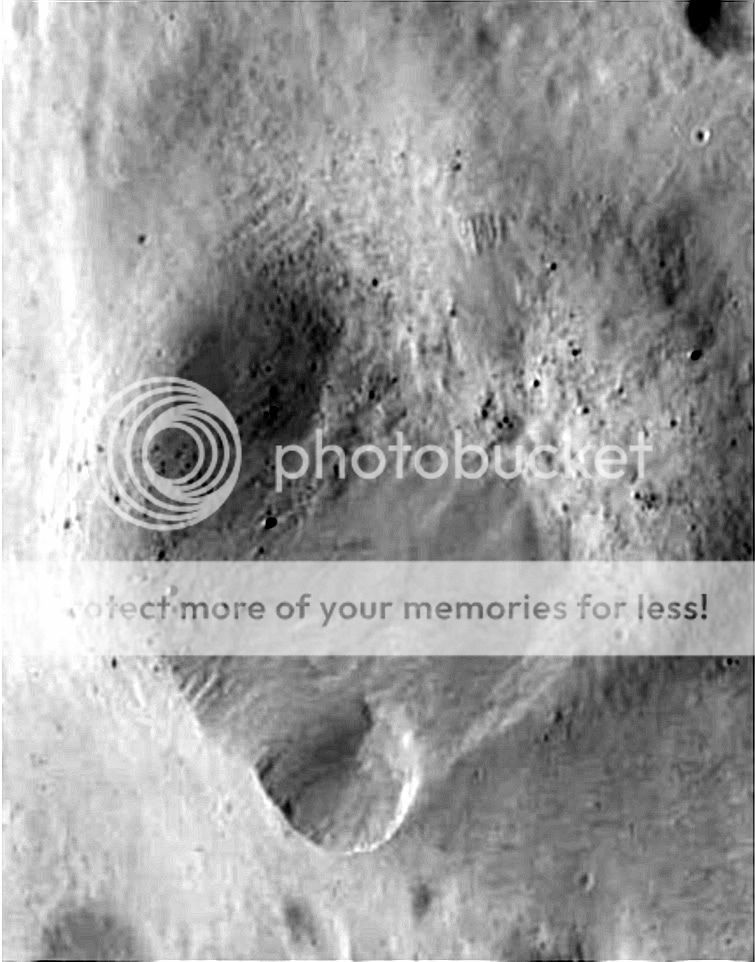
Enlarged, contrast & brightness adjusted sharpened view of 'crescent' 21 Lutetia as Rosetta departed & looked back.
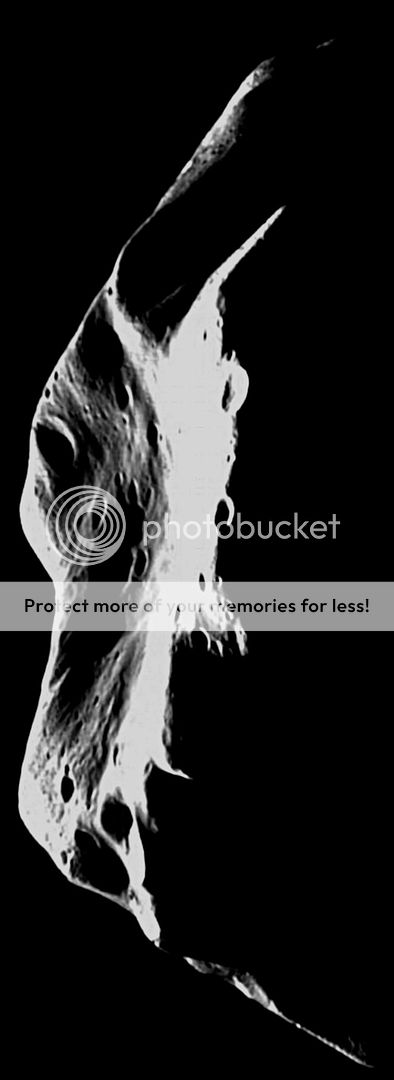
Enlarged, sharpened crop of floor of central 20 KM portion of basin.
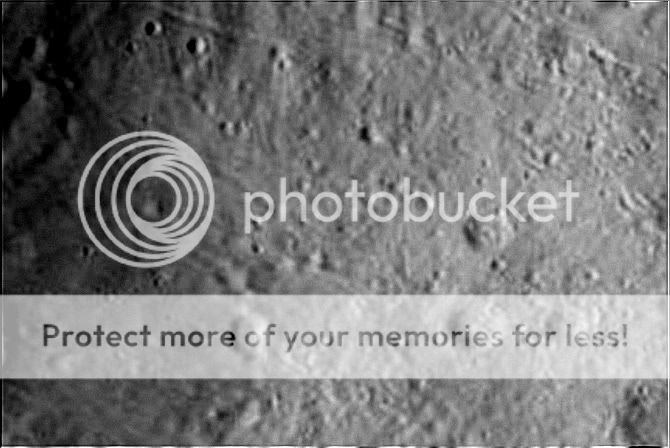
Enlarged, sharpened crop of 20 KM wide 'smoother' area, either a ghost crater likely filled with regolith or a massive landslide.

Enlarged, sharpened crop 19.5 KM area enhanced contrast of another region heavily grooved.

Enlarged, sharpened crop of a 16.5 KM area with a sharp crater with interneal striations, certainly debris sliding down the crater walls & at least one large boulder just to the outside at the 1 o'clock position.
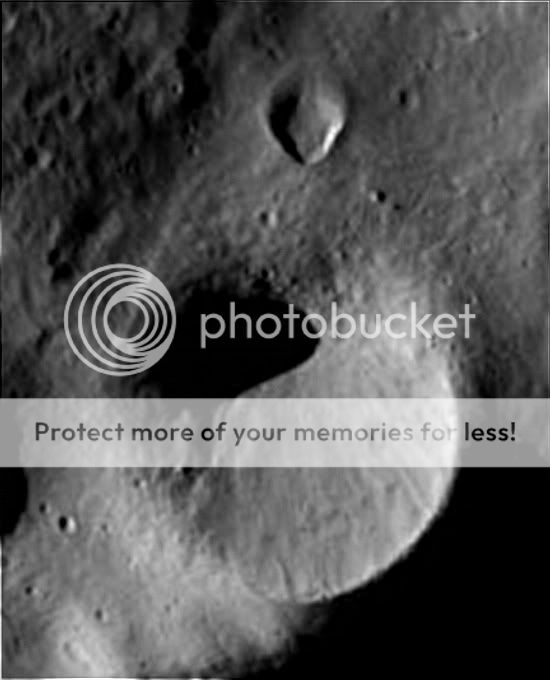
Enlarged, sharpened, contrast enhanced crop rotated 90 degrees of a 35 KM portion of limb, rotated to look like a horizon. That lump or mountain is approx 5,000 metres tall.
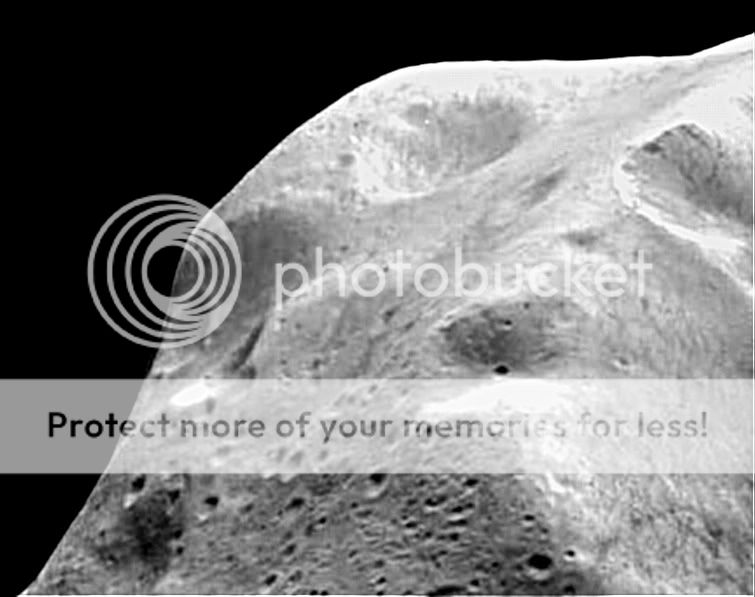
Below an enlarged, contrast enhanced, sharpened crop of a 17.5 KM wide section of the large basin on the eastern side, showing parallel grooves on 21 Lutetia & these look very much like many of those on the Mars moon Phobos.
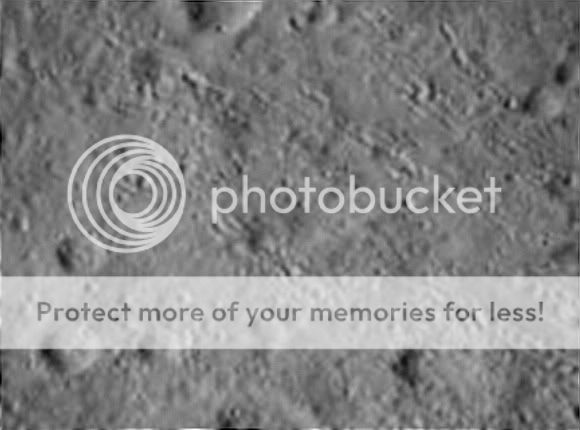
Below, Emily Lakdawalla has created a new montage of asteroids & comets to scale, with 21 Lutetia included. Shows how large she really is.
Below is all credit to Emily Lakdawalla, clickable thumbnail of relative sizes of asteroids & comets visited to date.

30 KM wide area on the second to last one during approach of 21 Lutetia (2 minutes prior to closest approach). Both dark floored craters & grooves are visible. At closest approach this area was visible but was very highly foreshortened. Resolution was still an excellent 70 metres (still far superior to what was anticipated for closest approach)

A section of 35 KM wide section of limb rotated 90 degrees, a 5,000 metre tall mountain (was bottom left).

Same area as above but from a slightly different angle.

A 20 KM section of limb rotated 90 degrees. A few narrow grooves are visible, small dark floored craters & what looks like a valley on 21 Lutetia.

ESA / DLR.
Andrew Brown.
21 Lutetia has a diameter of approx 132 KM / 82 miles, & orbits the Sun in the main Asteroid Belt between the orbits of Mars & Jupiter.
21 Lutetia orbit's the sun in a mildly elliptical, but stable orbit, with a close point to the sun of 189.63 million miles or 2.04 times the Earth to Sun distance, with a far point of 263.20 million miles or 2.83 times the Earth to Sun distance once every 3 years & 292 days (a 21 Lutetia year).
The large asteroid rotates on it's side with a tilt of approx 85 degrees (Earth has a tilt of 23.5 degrees, hence our seasons), so 21 Lutetia has some severe seasons as around a solstice near enough one 'hemisphere ' of the asteroid is is contant sunlight, whilst the other is in total darkenss, with even amounts of sunlight around the equinoxes. This means that at a 'summer' Solstice the Sun passes almost overhead of a pole, with the equator running along the day / night boundary.
Calculations show that in high Summer, the maximum surface temperature may reach a dizzying high of Minus 7 Celsius / 19 F, we get colder than that here in Ashford, Kent, UK sometimes in Winter & Spring.
However on the shadowed night side, temperatures are likley to drop to around or even below Minus 230 Celsius / Minus 382 F, cold enough to freeze Methane, Oxygen & Nitrogen & liquefy Hydrogen.
Just to report, my take & a few snippets picked up, the images from closest approach are EVEN better than anticipated. The whole of 21 Lutetia at closest approach was seen to 60 metre resolution, due to the precise tracking of Rosetta. 95 metre resolution was anticipated, but 60 being achieved, is just astonishing.
Also 21 Lutetia appears to me (I have been working on a few images, see previous posts) to be a primitive Type C body, though without compositional data, cannot say for sure.
There is a large basin, over 60 KM wide on the 132 KM by 101 KM by 76 KM wide asteroid, there are grooves, very similar to those on the Mars moon Phobos & the few seen on asteroid 951 Gaspra, as seen by the Jupiter bound Galileo Spacecraft.
There are boulders, craters of all sizes, a landslide in at least one crater & the shape of 21 Lutetia is multifaceted (that was expected). There are virtually no changes in albedo.
Later today, Sunday 11th July 2010, there will be full colour images & maybe more B & W imagery. The image from 80,000 KM looking reddish was taken through a red filter & is not actual colour, although 21 Lutetia, may turn out reddish, we'll see.
To me, the approach to 21 Lutetia suggests to me that the large 132 KM wide asteroid rotates in a prograde direction, west to east like Earth & that 21 Lutetia may have been caught near an equinox, based on how the appearance of the shape of 21 Lutetia during approach seem to suggest an equinoxial approach. 21 Lutetia is thought to rotate at a tilt of 85 degrees, on it's side basically, once every 8 hours & 10 minutes.
There appear to be no moons orbiting 21 Lutetia unlike 243 Ida.
Some craters appear to have dark floors like asteroid 243 Ida as seen by the Jupiter bound Galileo Spacecraft.
Other data, concerning potential dust, outgassings & fields & particles will be released later.


Early 21 Lutetia approach images enlarged & sharpened by me.




21 Lutetia with Saturn in background.

21 Lutetia limb.

21 Lutetia. Highly grooved like Phobos.

Two clickable thumbnails for full sized images. 21 Lutetia is highly grooved.


Part of the highly detailed limb enlarged sharpened crop of 21 Lutetia.

Full resolution 'crescent' 21 Lutetia, as Rosetta looks back.

Clickable thumbnail 4 views near closest approach of 21 Lutetia.

One of the final approach images of 21 Lutetia.

An enlarged sharpened crop of some grooves on 21 Lutetia. Boulders can also been seen. My guess is that this area is approx 20 KM wide.

An enlarged sharpened crop of some grooved terrain including a few isolated ones at right angles on 21 Lutetia. My guess is that this area is approx 20 KM wide.

An enlarged, sharpened crop of the basin on 21 Lutetia, oblique view earlier during the approach.

An enlarged, sharpened crop of the basin on 21 Lutetia, oblique view later & closer during the approach.

Enlarged, sharpened crop of the 'bottom' south polar region (???) of 21 Lutetia

Enlarged sharpened crop of an area approx 20 KM wide on the terminator. If you look carefully at the craters, some appear to have slightly darker floors, much like some on asteroid 243 Ida.

Enlarged, sharpened contrast enhanced crop of crater approx 20 KM wide with boulders & a possible landslide.

Enlarged, contrast & brightness adjusted sharpened view of 'crescent' 21 Lutetia as Rosetta departed & looked back.

Enlarged, sharpened crop of floor of central 20 KM portion of basin.

Enlarged, sharpened crop of 20 KM wide 'smoother' area, either a ghost crater likely filled with regolith or a massive landslide.

Enlarged, sharpened crop 19.5 KM area enhanced contrast of another region heavily grooved.

Enlarged, sharpened crop of a 16.5 KM area with a sharp crater with interneal striations, certainly debris sliding down the crater walls & at least one large boulder just to the outside at the 1 o'clock position.

Enlarged, sharpened, contrast enhanced crop rotated 90 degrees of a 35 KM portion of limb, rotated to look like a horizon. That lump or mountain is approx 5,000 metres tall.

Below an enlarged, contrast enhanced, sharpened crop of a 17.5 KM wide section of the large basin on the eastern side, showing parallel grooves on 21 Lutetia & these look very much like many of those on the Mars moon Phobos.

Below, Emily Lakdawalla has created a new montage of asteroids & comets to scale, with 21 Lutetia included. Shows how large she really is.
Below is all credit to Emily Lakdawalla, clickable thumbnail of relative sizes of asteroids & comets visited to date.

30 KM wide area on the second to last one during approach of 21 Lutetia (2 minutes prior to closest approach). Both dark floored craters & grooves are visible. At closest approach this area was visible but was very highly foreshortened. Resolution was still an excellent 70 metres (still far superior to what was anticipated for closest approach)

A section of 35 KM wide section of limb rotated 90 degrees, a 5,000 metre tall mountain (was bottom left).

Same area as above but from a slightly different angle.

A 20 KM section of limb rotated 90 degrees. A few narrow grooves are visible, small dark floored craters & what looks like a valley on 21 Lutetia.

ESA / DLR.
Andrew Brown.


